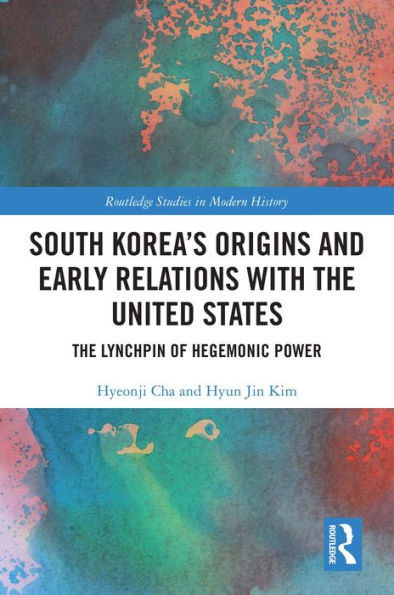Bringing a fresh perspective to an understudied area, this book offers a critical, source-based examination and assessment of the roles of the Provisional Government of the Republic of Korea (KPG) and the US during World War II in the rebirth of Korea as a nation state.
Presenting original research from contemporary Korean and American sources, the first half of this book explores how the US policy regarding the independence of the Korean peninsula was articulated by the US, and how it aimed to prevent the domination of Korea by either China or the Soviets. Chapters 4 and 5 introduce the US’s policy of utilizing Korean soldiers on the battlefield against Japan, and examines whether the KPG’s strategies of military diplomacy were effective or otherwise. Finally, Chapter 6 assesses the impact of the joint military training for the "Eagle Project" involving the Korean independence Army and the US Office of Strategic Services, and its impact on the development of the US-South Korea alliance. Throughout the book, parallels can be drawn from this geopolitical struggle with a more contemporary one – that between China and the US, which shows how the lessons learned in the 1940s are just as relevant to researchers and policy-makers today.
This is an illuminating read for students and scholars of Korean modern history, political science and geopolitics of the Asia-Pacific region more generally. The book will also appeal to public servants in the area of foreign affairs and military strategy.
Bringing a fresh perspective to an understudied area, this book offers a critical, source-based examination and assessment of the roles of the Provisional Government of the Republic of Korea (KPG) and the US during World War II in the rebirth of Korea as a nation state.
Presenting original research from contemporary Korean and American sources, the first half of this book explores how the US policy regarding the independence of the Korean peninsula was articulated by the US, and how it aimed to prevent the domination of Korea by either China or the Soviets. Chapters 4 and 5 introduce the US’s policy of utilizing Korean soldiers on the battlefield against Japan, and examines whether the KPG’s strategies of military diplomacy were effective or otherwise. Finally, Chapter 6 assesses the impact of the joint military training for the "Eagle Project" involving the Korean independence Army and the US Office of Strategic Services, and its impact on the development of the US-South Korea alliance. Throughout the book, parallels can be drawn from this geopolitical struggle with a more contemporary one – that between China and the US, which shows how the lessons learned in the 1940s are just as relevant to researchers and policy-makers today.
This is an illuminating read for students and scholars of Korean modern history, political science and geopolitics of the Asia-Pacific region more generally. The book will also appeal to public servants in the area of foreign affairs and military strategy.

South Korea's Origins and Early Relations with the United States: The Lynchpin of Hegemonic Power
140
South Korea's Origins and Early Relations with the United States: The Lynchpin of Hegemonic Power
140Related collections and offers

Product Details
| ISBN-13: | 9781000578867 |
|---|---|
| Publisher: | Taylor & Francis |
| Publication date: | 04/28/2022 |
| Series: | Routledge Studies in Modern History |
| Sold by: | Barnes & Noble |
| Format: | eBook |
| Pages: | 140 |
| File size: | 3 MB |
